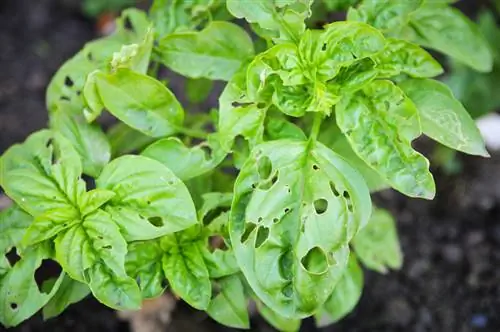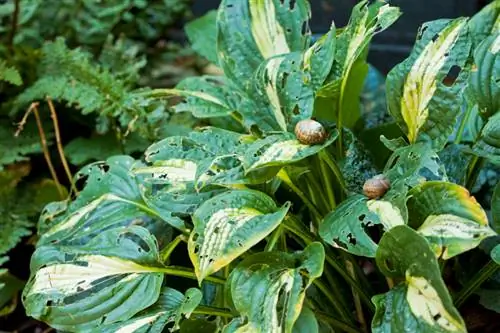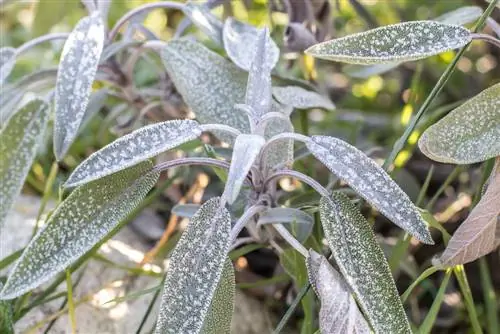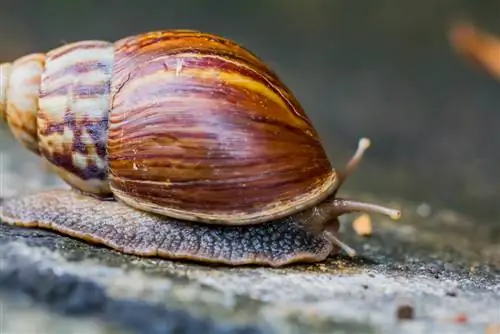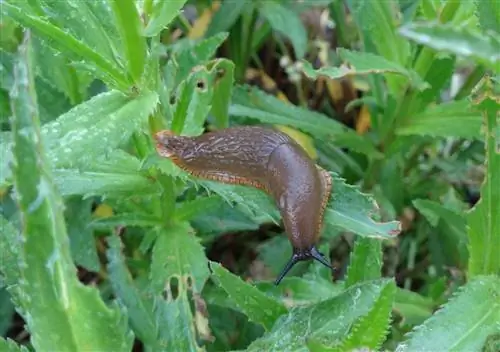- Author admin [email protected].
- Public 2023-12-16 16:46.
- Last modified 2025-01-23 11:20.
Basil is not only extremely popular with people, but is also a prey species for numerous pests. You can find out here which pests are particularly prominent here and how they can be combated using natural means.

Which pests attack basil and how can you combat them?
Pests that affect basil include slugs, aphids, bedbugs and flies. Snail fences, beer traps or natural barriers can be used to combat snails. For sucking and stinging pests, removing infected plant parts, rinsing the plant, dusting with primary rock dust or charcoal ash, neem seeds, adhesive boards and the use of beneficial insects such as predatory mites or ladybirds can help.
If something is eating away at the basil - here's what to do about it
The delicate leaves of basil are the favorite food of the omnipresent snails. The insatiable pests quickly eat the valuable herb plant, stripped down to the skeleton. How to combat the pests:
- collect the cold-hardened snails in the early hours of the morning
- put up a snail fence and position beer traps within the area
- lay barriers around the basil plants, such as grit or sawdust
- Sprinkle coffee grounds and coffee grounds, as caffeine has a toxic effect on slugs
- Equip pot and balcony box with an electric snail fence (€54.00 on Amazon)
If you have just planted young plants in the bed, a snail collar gives them the best protection. If lavender, busy lizard or gypsophila are added, they will scare away the approaching snail armada with their scent.
Effectively combat sucking and stinging pests
If the previously juicy green basil leaves are covered in speckles and holes, sucking and stinging pests are wreaking havoc here. It is usually an infestation by aphids, bugs or flies. The use of classic home remedies is predominantly based on liquid solutions, which is of little benefit to sensitive royal herb. Experienced hobby gardeners therefore proceed as follows to combat the brood:
- cut out all infected plant parts
- burn the clippings or dispose of them in household waste
- spray a strong plant upside down and place it in an airy place to dry quickly
- repeatedly dust an infected royal herb with primary rock powder
- optionally apply pure charcoal ash with the powder syringe
- Work neem seeds into the substrate
- Put up adhesive boards against flying aphids and whiteflies
Fighting aphids and ants always goes hand in hand. Both types of insects enter into a symbiotic relationship in which one basil falls by the wayside. Aphids secrete honeydew that ants can't get enough of. If the crawling creatures sense danger for the lice, they quickly transport the source of honeydew to the next plant in the garden. Sprinkling baking soda on the streets will put an end to the ghost.
Tip
The targeted use of beneficial insects is becoming increasingly common in biological pest control. Special providers breed the larvae of predatory mites or ladybirds and send them to you in special containers. When applied to the infected basil plants, the pests are gone within a few days.

